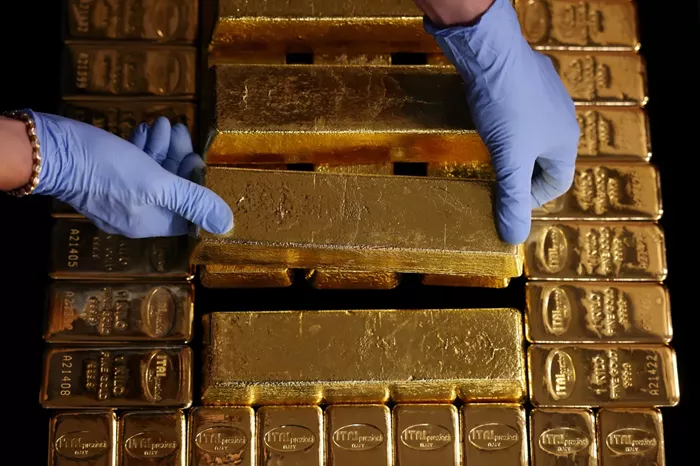Gold is in the midst of a record-breaking bull run, and central banks have become a primary driving force behind the precious metal’s meteoric rise. While the scale of their gold purchases remains shrouded in secrecy, analysts believe that these institutions are likely to continue their buying spree for the foreseeable future.
Global central banks are currently acquiring approximately 80 metric tons of gold each month, which amounts to around $8.5 billion at current market prices. This purchasing activity, however, is largely hidden from public view. Despite the lack of full transparency, trade data reveals that China is one of the largest buyers, with additional purchases being funneled through Switzerland by other unidentified buyers.
Central banks have long been considered a stabilizing force in the gold market, but their recent buying spree marks a sharp increase in demand. For years, central banks have been accumulating gold as a hedge against economic uncertainty, inflation, and currency devaluation, but this recent surge in purchases has been especially notable. The trend has been compounded by the ongoing geopolitical tensions and volatility in global markets, which have driven institutional investors toward safer assets like gold.
According to analysts at Goldman Sachs, the pace of gold accumulation by central banks has doubled over the past three years. The reasons for the increased interest in gold are multi-faceted. On one hand, rising economic risks—including inflationary pressures, concerns over a potential global recession, and ongoing trade disputes—have made gold an attractive option for central banks seeking to protect their financial stability. On the other hand, the lack of transparency surrounding these purchases has made it difficult to fully assess the extent to which gold has become a safe haven.
“The secrecy surrounding these acquisitions makes it challenging to gauge the true scale of central bank buying activity,” said an analyst at Goldman Sachs. “However, what we can say with certainty is that this trend is likely to continue, and it will probably support gold prices in the long term.”
The purchases made by central banks have sparked a larger debate about the future role of gold in global finance. While many view the metal as a relic of a bygone era, others see it as a crucial reserve asset in an increasingly uncertain economic landscape. The unprecedented pace of central bank buying has only reinforced the notion that gold remains an essential asset for diversifying national reserves.
Additionally, the limited visibility into the actual volume of gold held by central banks creates an atmosphere of speculation. While China has been confirmed as a major buyer, the purchases of other central banks are largely unreported. Many experts suspect that other nations, including those in the Eurozone, are following a similar strategy but prefer to keep their activities under wraps.
The data also suggests that much of the gold purchased by central banks is funneled through Switzerland, a well-established gold trading hub. While the Swiss National Bank does not publicly disclose its own gold holdings, the country plays a key role in facilitating global gold transactions. This reliance on Switzerland has raised questions about the role of smaller nations and private buyers in the broader gold market, as many of these transactions are conducted outside of public scrutiny.
In light of this continued demand, gold prices have surged to new heights, and experts predict that the trend will persist. With central banks continuing to stockpile gold in record amounts, there is a growing sense that gold could experience further gains in the coming months. The metal has already proven itself as a reliable store of value during times of economic turmoil, and as long as geopolitical risks and economic uncertainty remain, central banks are unlikely to slow down their acquisitions.
For the average investor, this increased central bank demand underscores the importance of gold as a strategic asset. Whether in times of inflation, recession, or geopolitical conflict, gold continues to shine as a reliable hedge. The question, however, remains: How much of this demand is being driven by official purchases, and how much is simply a reflection of market forces?
At this point, the mystery surrounding the true scale of central bank gold buying continues to be a key factor in driving the price of the precious metal. Whether or not this trend will taper off remains to be seen, but for now, it seems that gold is poised to remain in the spotlight.
Related Topics:
USD Strengthens Modestly, Gold Near Lows; Focus on U.S. PCE Data
Gold Rebounds Slightly as U.S. Data and Trade Talks Drive Focus
U.S. Jobs Data Stabilizes Gold Prices, Offsetting Trade Uncertainty

